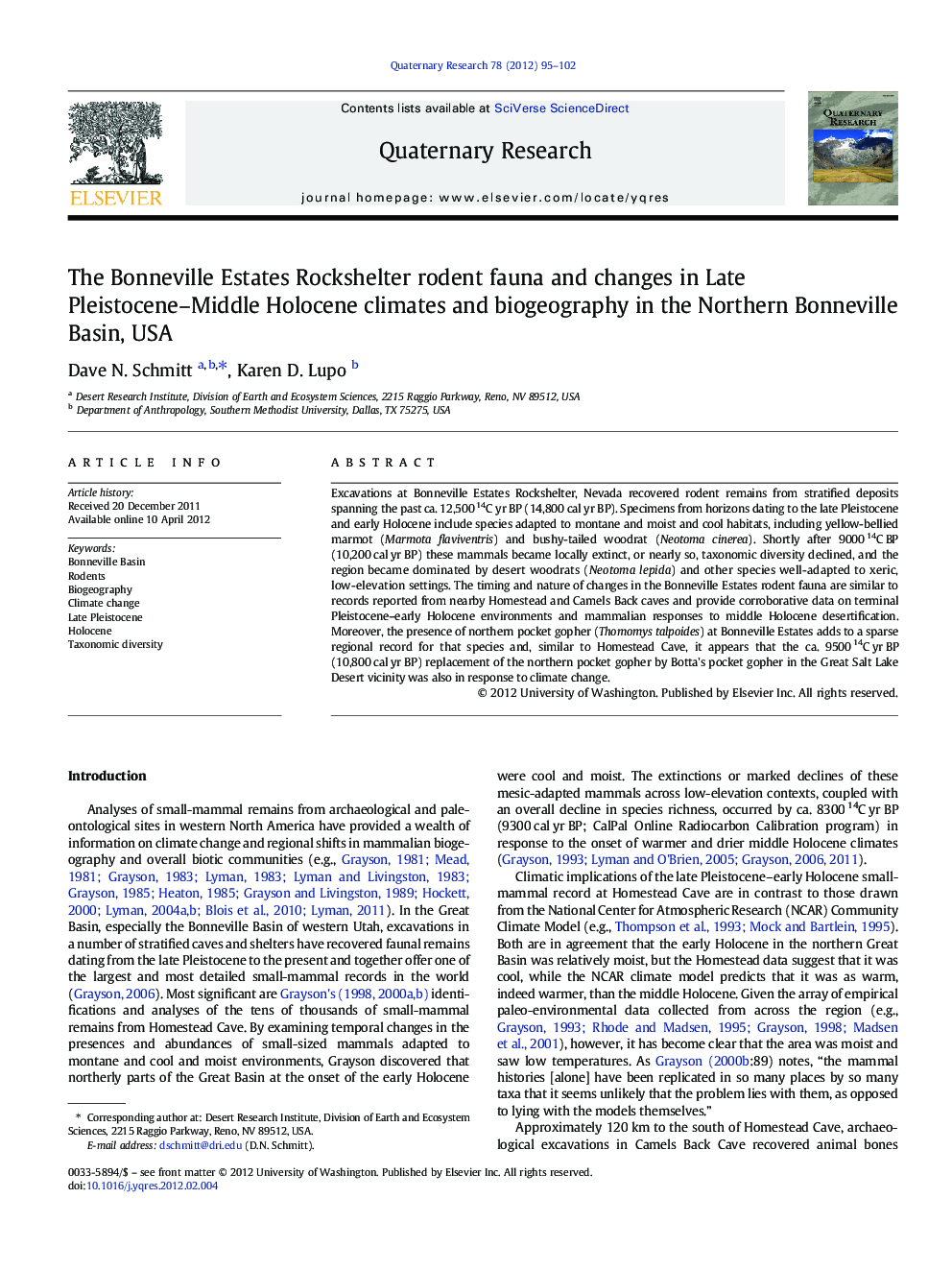| Article ID | Journal | Published Year | Pages | File Type |
|---|---|---|---|---|
| 1045576 | Quaternary Research | 2012 | 8 Pages |
Excavations at Bonneville Estates Rockshelter, Nevada recovered rodent remains from stratified deposits spanning the past ca. 12,500 14C yr BP (14,800 cal yr BP). Specimens from horizons dating to the late Pleistocene and early Holocene include species adapted to montane and moist and cool habitats, including yellow-bellied marmot (Marmota flaviventris) and bushy-tailed woodrat (Neotoma cinerea). Shortly after 9000 14C BP (10,200 cal yr BP) these mammals became locally extinct, or nearly so, taxonomic diversity declined, and the region became dominated by desert woodrats (Neotoma lepida) and other species well-adapted to xeric, low-elevation settings. The timing and nature of changes in the Bonneville Estates rodent fauna are similar to records reported from nearby Homestead and Camels Back caves and provide corroborative data on terminal Pleistocene–early Holocene environments and mammalian responses to middle Holocene desertification. Moreover, the presence of northern pocket gopher (Thomomys talpoides) at Bonneville Estates adds to a sparse regional record for that species and, similar to Homestead Cave, it appears that the ca. 9500 14C yr BP (10,800 cal yr BP) replacement of the northern pocket gopher by Botta's pocket gopher in the Great Salt Lake Desert vicinity was also in response to climate change.
